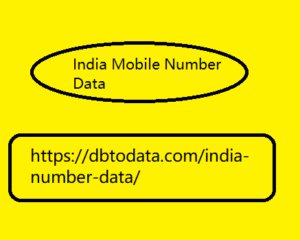Post by account_disabled on Mar 10, 2024 9:59:27 GMT 1
2021 has been a year of discussions around the future of the internet. Not in Italy, unfortunately, but in the places where innovation takes place. Web 1.0 was a read-only network, while Web 2.0 enabled even non-experts to create content. What will happen now? To understand where we are at, we can use the "S-curve" model which relates two variables: the number of users of an innovation and its lifespan on the market. Typically when a technology is placed on the market it struggles to take root and survives thanks to the investments of those who bet on its success. Then, thanks to marketing activities, it spreads to an increasingly larger number of people.
Finally, as the market becomes saturated and new adoptions begin India Mobile Number Data to stagnate, space opens up for further innovation. With respect to the future of the web, we are currently in a phase of confusion in which two distinct lines of thought emerge, which propose embryonic visions and solutions. On the one hand there are those who talk about Web3 and on the other those who evoke the metaverse. Web3 The term Web3 refers to a decentralized network in which the client/server structure (in which data is managed and stored by trusted central bodies) would be replaced by blockchain technology (an open and distributed register on a peer to peer computer network) and by a set of new protocols.

While web 2.0 innovated the front-end, web3 would aim to change the back-end of our online experiences. Modern blockchains, like Ethereum, are programmable like a PC or a smartphone – argue Chris Dixon and Packy McCormick – but what makes them unique is that programmers can write applications that contain “contracts” that automatically execute when certain future conditions occur ( smart contracts ). Therefore they would not be subject to sudden changes depending on the moods of those who developed them. Indeed, these applications often also provide for a distribution of ownership and voting rights among users, through tokens. The first dApps (decentralized applications) to generate respectable adoption were financial ones (DeFi) such as Compound, Maker and Uniswap. Here functions are performed by automated protocols controlled by widespread communities, rather than by central entities.
Finally, as the market becomes saturated and new adoptions begin India Mobile Number Data to stagnate, space opens up for further innovation. With respect to the future of the web, we are currently in a phase of confusion in which two distinct lines of thought emerge, which propose embryonic visions and solutions. On the one hand there are those who talk about Web3 and on the other those who evoke the metaverse. Web3 The term Web3 refers to a decentralized network in which the client/server structure (in which data is managed and stored by trusted central bodies) would be replaced by blockchain technology (an open and distributed register on a peer to peer computer network) and by a set of new protocols.

While web 2.0 innovated the front-end, web3 would aim to change the back-end of our online experiences. Modern blockchains, like Ethereum, are programmable like a PC or a smartphone – argue Chris Dixon and Packy McCormick – but what makes them unique is that programmers can write applications that contain “contracts” that automatically execute when certain future conditions occur ( smart contracts ). Therefore they would not be subject to sudden changes depending on the moods of those who developed them. Indeed, these applications often also provide for a distribution of ownership and voting rights among users, through tokens. The first dApps (decentralized applications) to generate respectable adoption were financial ones (DeFi) such as Compound, Maker and Uniswap. Here functions are performed by automated protocols controlled by widespread communities, rather than by central entities.
